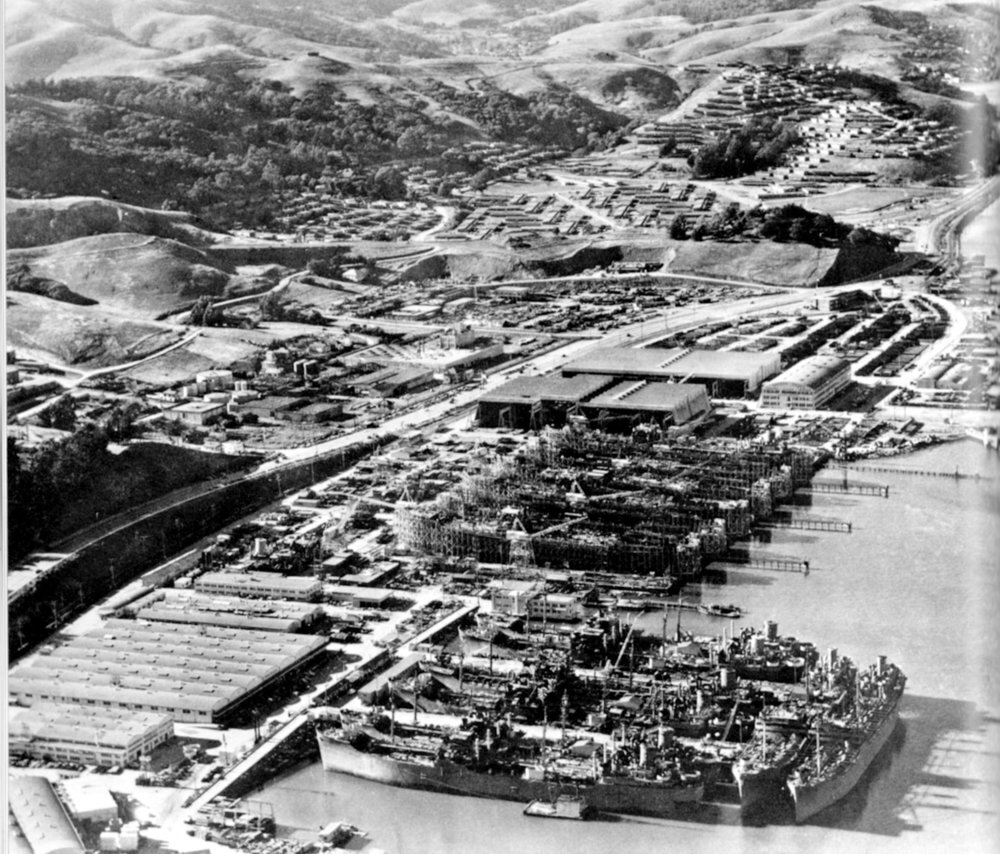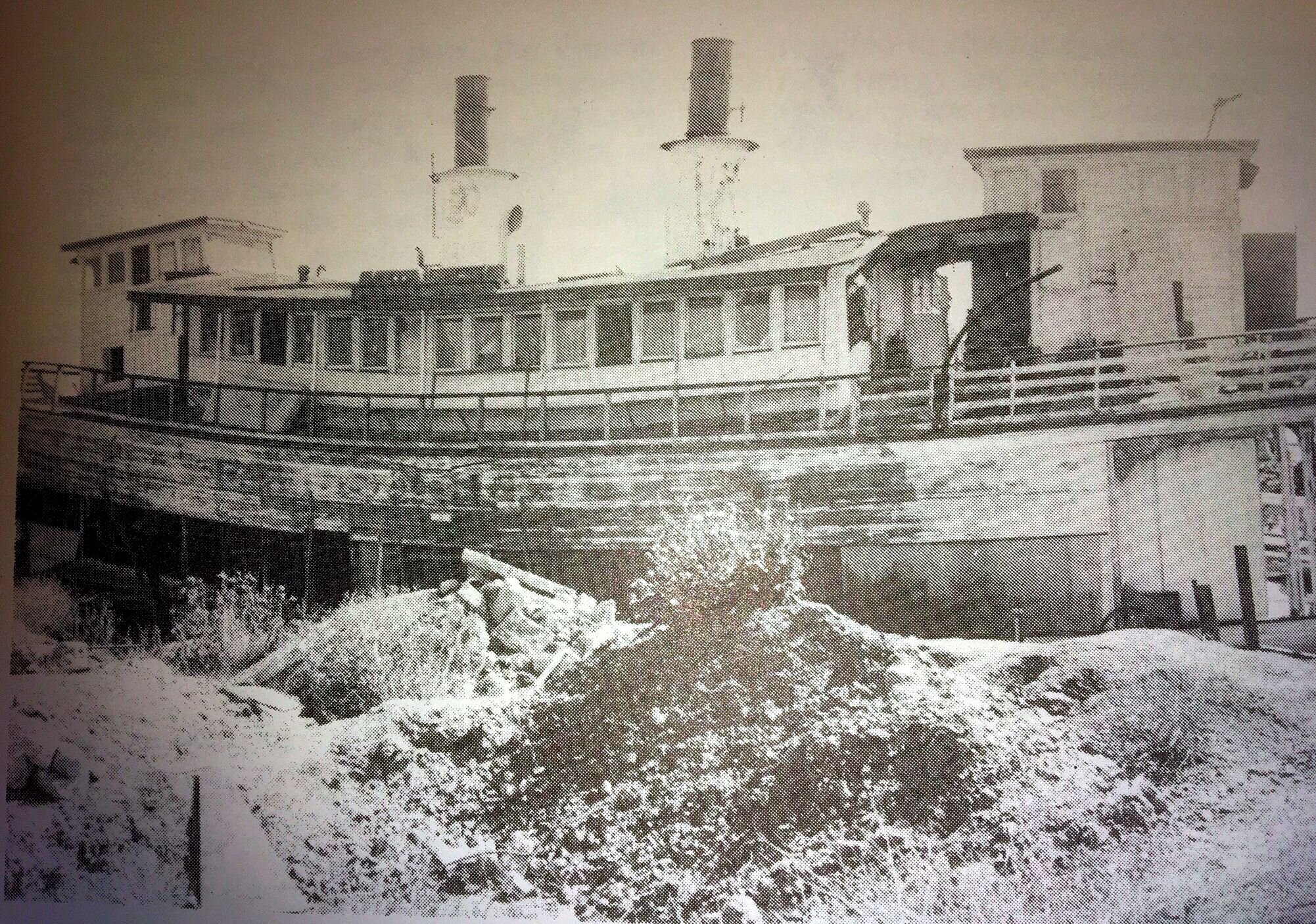By Larry Clinton, Sausalito Historical Society
That far off 6.0 temblor that shivered the timbers of our floating home on July 8 stirred up memories of the much closer 6.9 magnitude Loma Prieta quake of October 17, 1989.
In a 30th-anniversary retrospective of the “World Series Earthquake,” Marin Magazine pointed out: “The Loma Prieta quake let Marin off relatively easy. Damages in the county were $1.6 million of the $10 billion Bay Area total. No fatalities occurred in the county itself, although three Marin residents died in the collapse of Interstate 880.” Nevertheless, bridges and airports were closed, the Bay Area went dark due to power outages, and phone service was interrupted. Life in Sausalito was affected in many different ways.
A user of the Sausalito-based computer network WELL “eerily speculated that an earthquake might be in the offing,” according to a report in the Santa Rosa Oak Leaf newspaper. Here are some excerpts from the paper’s report two days after the deadly earthquake hit:
Three minutes after midnight Tuesday morning, a woman, known on the Sausalito-based WELL computer network as MacPost, said, “Nice little set of earthquakes on the west side of the San Andreas fault for the past hour I’m trusting they’re not leading to anything bigger, but if they do and you have to dig me out of the rubble, you’ll find me under the desk with the Macintosh on top... Ah, life on the faultline.”
WELL communications were cut off when the earthquake cut electric power to its computer, located in a building on the Sausalito bay. “But,” said the Oak Leaf, “when power was restored at 1 a.m., hundreds of messages and earthquake reports poured into the communications network. One of the first respondents was MacPost, reporting, “It’s eerie, dark and quiet out there, except for the occasional quivering of the Bolinas mesa under my house.”
Reporters across the country said the WELL conferencing system was a vital important source of information during the emergency.
The Whole Earth ‘lectronic Link, normally shortened to The WELL, was started by Stewart Brand of Waldo Point Harbor and visionary physician Larry Brilliant in 1985; the name is partially a reference to some of Brand's earlier projects, including the Whole Earth Catalog.
COURTESY PHOTO
Buildings collapsed in the Marina in 1989, like this one at Beach and Divisadero
Shortly after the 1989 earthquake struck at 5:04 p.m., Brand was driving through the heavily damaged Marina District of San Francisco and stopped to help with rescue efforts. Later, he co-wrote an article for the S.F. Chronicle entitled “The Rescue that Failed,” detailing some of the problems that hindered rescue efforts. You can read it at https://www.sfchronicle.com/bayarea/article/The-rescue-that-failed-disorganization-empty-14514985.php.
As the Bay Area began to recover from the devastation, this paper reported on the effects on local businesses. A month after the disaster, Rebecca Speight, the chairman of the Downtown Merchants Association, said “The morale is really low among the merchants right now. Business is down due to the earthquake and a number of businesses are barely hanging on.”
But Sausalitans were already organizing relief efforts, according to Marin Scope:
“Local residents donated several truck loads of clothing, food, toys and camping gear over the past week, which were collected at the Sausalito Fire Station According to Fire Chief Steve Bogel people are still dropping off items.
"’When the chips are down, people turn out to be pretty darned nice,’ said Bogel who described the response as overwhelming. Included in the many contributions so far was a check for $7,000, piggy banks dropped off by children, and brand new clothes with tags still on them.”
The Sausalito Tallship Society sponsored a benefit dinner and raffle for earthquake victims at the Sausalito Cruising Club on November 9. “The event featured accounts of Captain Ralph ‘Buck’ Buchan, Californian skipper, merchant marine officer, and former Marina District resident,” Marin Scope reported, adding, “Buck’s apartment was reduced to a pile of rubble, killing three occupants.”
Sausalito’s Japanese sister city, Sakaide, proffered some of the more touching gestures. A Sakaide official visited here just a month later and presented the city with a gift of 3,000 yen (approximately $300) and numerous letters of support and concern from youngsters who had visited Sausalito previously. A junior high student wrote, “We hear that there were not so serious damages in your city, so we feel assured. But we suspect that you may still have a shock on your mind. We wish we could visit you and help you."
“The letters are very cute,” Mayor Bob Mitchell told Marin Scope. ‘It was very nice to know they are concerned about us.’ Mitchell said that he felt bad that the city didn’t have a gift to give to Kometani so he took off his wrist watch, which Kometani had been admiring, and gave it to him. Mitchell had the watch made for himself with the seal of the city on it. “Since it was one of a kind I thought I would show our appreciation and give him the watch.”
Those of us who lived through the earthquake and its aftermath will recall how it brought out the best of the people of the Bay Area.





















